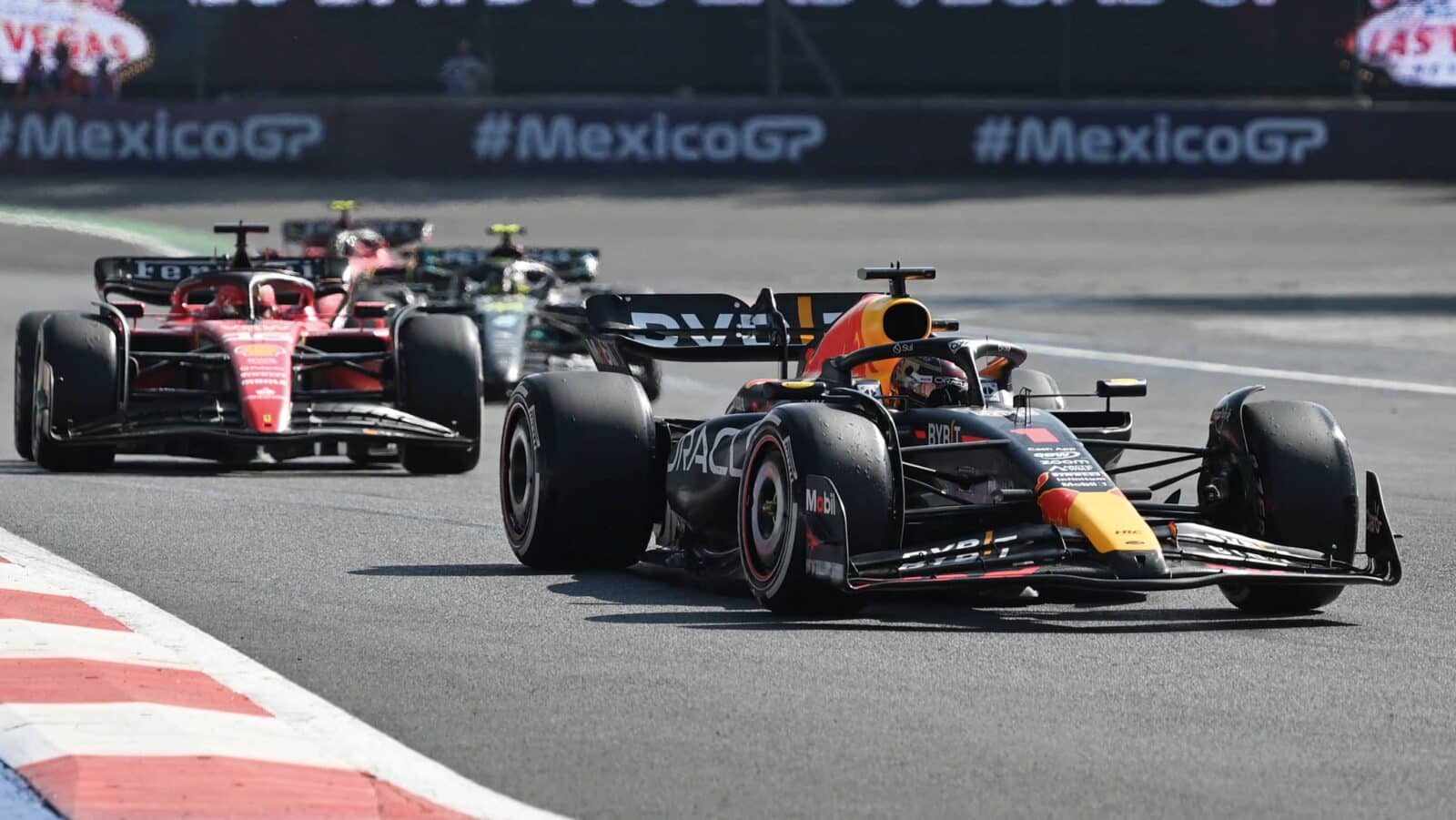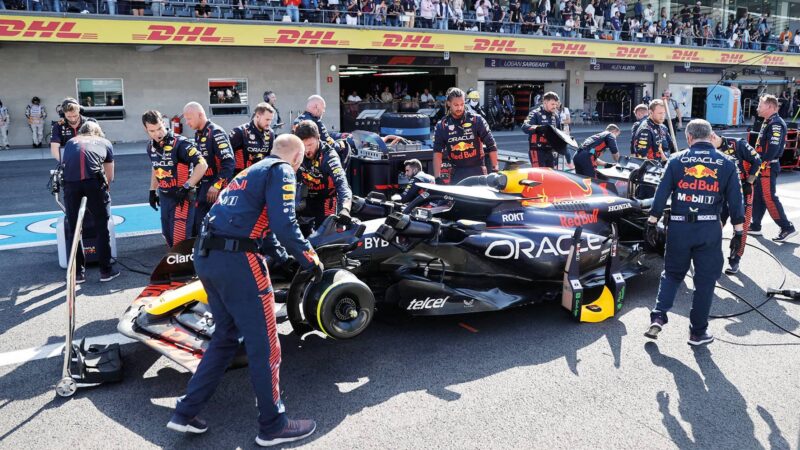How F1 teams cope with the thin air of Mexico City GP
At an elevation of 7500ft, Mexico’s Autodrómo Hermanos Rodriguez is one of the trickier tracks on the F1 calendar. Mark Hughes reveals how teams managed the conditions

Altitude plays havoc with track temperature and car performance – but the RB19 gave Red Bull options in Mexico
Getty Images
Although the red flags for the Kevin Magnussen crash in Mexico neutralised it, there was potentially a fascinating strategy battle unfolding between two-stopping Max Verstappen and one-stopping Charles Leclerc. The red flag meant everyone got to change tyres for free and run from there to the end, but up until that point the race’s outcome was far from settled. In reality, Red Bull had opted for a theoretically slower strategy than Ferrari. Everyone’s pre-race simulations suggested the one-stop was faster, albeit only by a few seconds. So why had Red Bull done the counter-intuitive thing?
“Verstappen saved his hard tyres, keeping them for the race”
It was about the volatility of track conditions. The high altitude and air 25% thinner than at sea level has weird effects quite aside from reducing the downforce, drag and cooling of the cars. The effect of fewer air molecules means that the surface temperature is much more responsive to sunlight. It takes only a little bit of sun to send the track temperature soaring up towards 50°C. Similarly, a 2°C reduction in the ambient temperature between the beginning and end of qualifying resulted in a track temperature reduction of 9°C. These are wild swings and can have a profound effect not just upon the tyres but also the car balance.
These swings were responsible for the Ferraris suddenly finding 1sec between Q2 and Q3 and locking out the front row, having not looked anything like a Red Bull threat in any prior running. The reduction in track temperature suddenly made it a front-limited track, which suited the Ferrari very well. Conversely, the track change completely lost Williams the great balance and speed it had shown up to this point in the weekend.
The Red Bull is less limited by one axle or the other than either of these two cars, Adrian Newey recently explaining how it has been deliberately conceived to be at its best in race conditions even at the expense of qualifying, which has meant equalising the loads taken by front and rear axles as far as possible. That trait – and the skills of Verstappen – gives the team great confidence in the car’s race pace regardless of any difficulties in qualifying.

After Kevin Magnussen’s crash, Red Bull capitalised on a tyre change for Verstappen
Getty Images
The risk with a one-stop in Mexico was if the track conditions changed the car balance to place excessive strain on the rear tyres, then it was potentially very difficult to rescue the strategy. Furthermore, the tyre choices made during the practices and qualifying have to be tailored to the intended race strategy. A two-stop was much more flexible. Besides which, according to Red Bull’s simulations, even if the track remained consistent it was only around 6sec slower than a one-stop. Red Bull felt confident its inherent pace superiority was greater than that, so it would be covered either way. Essentially, that choice of the theoretically slower but less risky strategy was a luxury granted by the car’s performance superiority.
So Verstappen saved his two sets of hard tyres, kept them back for the race. Leclerc had only one set. Starting, like most others, on the mediums it was important for Verstappen’s strategy that he led from the start so as to pull out distance on Leclerc as the foundation for the extra 21sec he’d be spending doing the extra stop. He duly won the start and began to edge away. He made his first stop on lap 19, from just under 5sec ahead. Leclerc kept going until lap 31 and emerged 16.5sec behind but with Verstappen needing to stop again. Could Max pull out the extra 5sec in the next 15 laps or so? Possibly. He’d needed to have to averaged over 0.3sec faster to do so. In the first stint he’d averaged 0.26sec. Even if he’d not managed it, he’d have been close – and on tyres 15 laps newer, he’d have had a performance advantage.
“We decided even before Sunday we were going to run the race that way,” said Christian Horner, “and Max fully supported it even though it might have meant him losing track position and having to overtake.” Magnussen’s suspension breakage-induced accident relieved Verstappen from having to do that.

